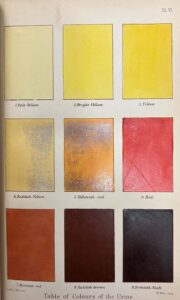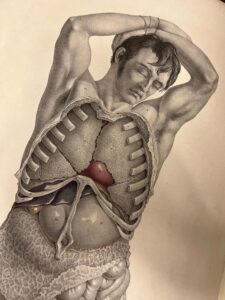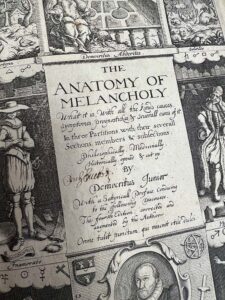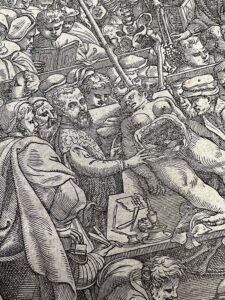What can history tell us? – perspectives from students at Exeter University’s Medical School
By Emma Laws, Cathedral Librarian.
As part of their fourth year studies, Exeter University medical students have the opportunity to ‘think otherwise’. The study of medical humanities challenges students to apply the arts and humanities to the science of medicine, dispensing with the idea of ‘right answers’ and, instead, approaching problems holistically and from the human perspective of interpretation, argument and representation.
Students have the opportunity to study their medical humanities module at Exeter Cathedral Library and Archives. With over 3,000 books covering 500 years of medical history, Exeter Cathedral has one of the country’s most important collections of historic books of science and medicine. Examples include John of Gaddesden’s 14th century medical compendium and Andreas Vesalius’s 16th century work on anatomy as well as later works, such as William Smellie’s midwifery manual and Edward Jenner’s pioneering work on inoculation.
In What can history tell us? our Library and Archives staff work with the students to consider: Who were the medics of the past? What did they know? How did they know it? And what lessons can we learn from the practice of medicine in centuries gone by? By the end of the course, students will produce a creative piece inspired by the Library’s collections – anything from a painting or piece of sculpture to a poster or dance performance – and write a reflective statement about their learning journey and how it will impact their medical practice in the future.
Read the student blogs below:

Neubauer and Vogel’s Guide to the qualitative and quantitative analysis of urine
Neubauer and Vogel’s Guide to the qualitative and quantitative analysis of urine by Joe, 4th Year medical student at Exeter University A Guide to the

Joseph Maclise’s Surgical Anatomy (1851)
Joseph Maclise’s Surgical Anatomy (1851) by Safa, 4th year medical student at Exeter University Joseph Maclise (1815-1880), a British anatomist born in Cork, studied anatomy at

Robert Burton’s The Anatomy of Melancholy
Robert Burton’s The Anatomy of Melancholy by Meghan, 4th year medical student at Exeter University In his medical text book, Robert Burton (1577-1640) poetically exclaimed

Andreas Vesalius’ De humani corporis fabrica (1543)
Andreas Vesalius’ De humani corporis fabrica (1543) By Laura, 4th Year medical student at Exeter University De humani corporis fabrica is Latin for ‘on the fabric